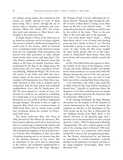














Much critical commentary has been devoted to examining Disneyland's Main Street, USA, a picturesque streetscape built in the style of American commercial architecture of the years 1890–1910 (the park opened on July 17, 1955; Figure 1). In particular, the search by historians and cultural critics for sources of inspiration has led to earlier amusement parks and fairs, as well as specific towns, from Fort Collins, Colorado, to Marceline, Missouri, Walt Disney's boyhood home. The result of such analysis, however, has been an overemphasis on the autobiographical aspect of Main Street as a replica of Marceline's principal thoroughfare. Simultaneously, another mode of interpretation has regarded Main Street as a "movie set" in the limited sense of an imaginary world scripted like a movie or TV show in which the visitor is an actor. It may be useful at this point in the discourse to recall that Main Street was a uniquely American symbol that Disney shared but did not invent, and that the idea of Main Street was widespread in literature, the theater, and film in the years before Disneyland's creation. Indeed, its representation in the movies produced on Disney's turf in "Hollywood, USA," as part of the genre of the small-town film of the 1930s and 1940s, offers a new avenue of inquiry. Consideration of how Main Street functions in long shot, close-up, and social context in several representative movies from these years helps to illuminate the design choices made by Disney's artists. In addition, a detailed look at the typical Hollywood back lot reveals various visual tricks borrowed by the designers of Main Street from the repertoire of set-design techniques. Finally, an investigation of four fully realized street sets built on Hollywood back lots in the years preceding Disney's theme-park street provides a new framework for understanding it.
[…]
| Id | 2594 |
|---|---|
| Availability | Free |
| Inserted | 2016-07-13 |